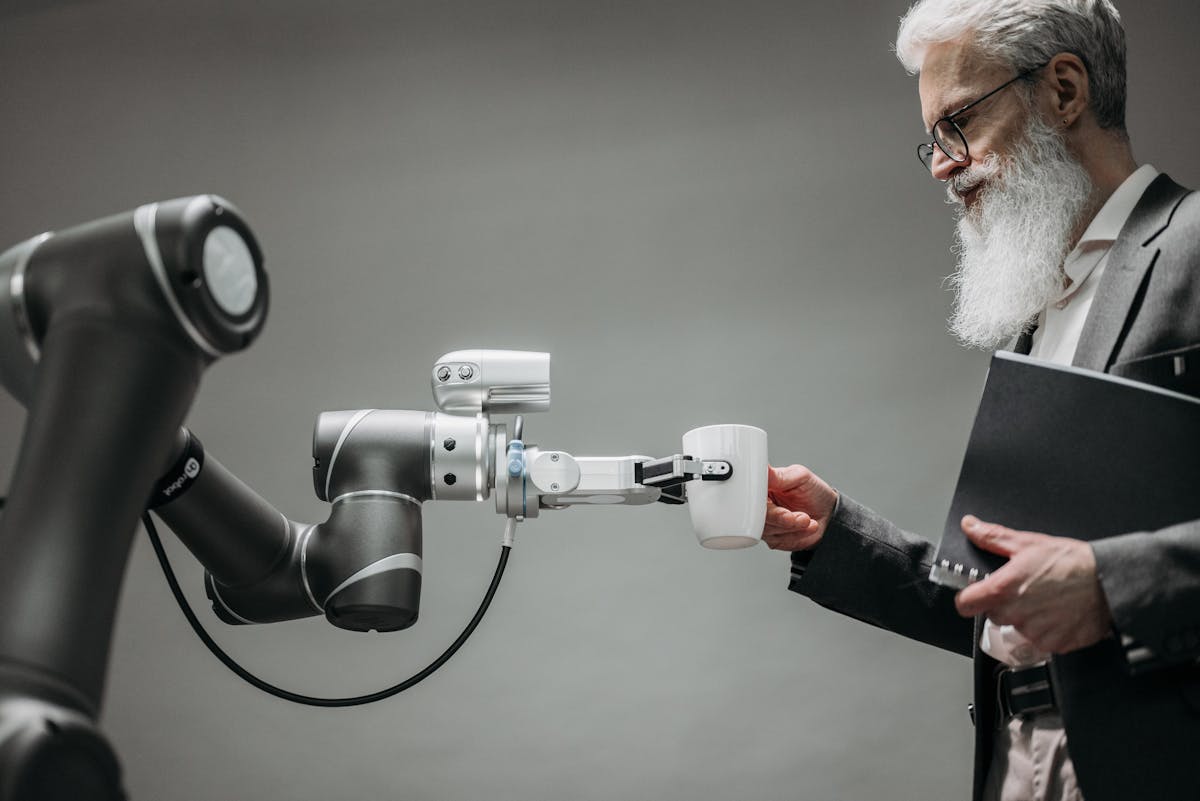Reinforcement Learning represents a paradigm shift in how we train artificial intelligence systems. Unlike supervised learning that relies on labeled data, RL enables AI agents to learn optimal behaviors through interaction with their environment, much like how humans learn through trial and error.
What is Reinforcement Learning?
Reinforcement Learning is a type of machine learning where an agent learns to make decisions by performing actions in an environment to maximize cumulative reward. The agent receives feedback in the form of rewards or penalties and uses this information to improve its decision-making over time.
Key Components
- Agent: The learner or decision-maker
- Environment: The world in which the agent operates
- State: Current situation of the agent
- Action: Choices available to the agent
- Reward: Feedback signal from the environment
- Policy: Strategy that defines the agent's behavior
How Reinforcement Learning Works
The Learning Process
The RL learning cycle follows these steps:
- Agent observes the current state of the environment
- Agent selects an action based on its current policy
- Environment responds with a new state and reward
- Agent updates its knowledge and policy
- Process repeats until optimal behavior is learned
Exploration vs Exploitation
One of the fundamental challenges in RL is balancing exploration (trying new actions) with exploitation (using known good actions). This trade-off is crucial for discovering optimal strategies.
Types of Reinforcement Learning
Model-Free vs Model-Based
Model-Free RL: The agent learns directly from experience without building a model of the environment.
Model-Based RL: The agent builds a model of the environment to plan and make decisions.
Value-Based vs Policy-Based
Value-Based: Learns the value of states or actions (Q-learning, DQN)
Policy-Based: Directly learns the optimal policy (Policy Gradient methods)
Actor-Critic: Combines both approaches for better performance
Popular RL Algorithms
Q-Learning
A model-free algorithm that learns the quality of actions, telling an agent what action to take under what circumstances.
Deep Q-Networks (DQN)
Combines Q-learning with deep neural networks, enabling RL to work with high-dimensional state spaces like images.
Policy Gradient Methods
- REINFORCE: Basic policy gradient algorithm
- Actor-Critic: Combines value estimation with policy optimization
- PPO: Proximal Policy Optimization for stable training
- A3C: Asynchronous Advantage Actor-Critic
Real-World Applications
Game Playing
RL has achieved superhuman performance in various games:
- AlphaGo: Mastered the game of Go
- OpenAI Five: Competed at professional level in Dota 2
- AlphaStar: Achieved Grandmaster level in StarCraft II
- Atari Games: DQN learning to play classic arcade games
Robotics
RL enables robots to learn complex behaviors:
- Robotic manipulation and grasping
- Autonomous navigation and path planning
- Bipedal and quadrupedal locomotion
- Human-robot interaction
Autonomous Vehicles
- Traffic light optimization
- Lane changing and merging decisions
- Parking and maneuvering
- Route planning and optimization
Business and Industry Applications
Finance and Trading
- Algorithmic trading strategies
- Portfolio optimization
- Risk management
- Fraud detection
Recommendation Systems
- Personalized content recommendations
- Dynamic pricing strategies
- Ad placement optimization
- User engagement maximization
Resource Management
- Energy grid optimization
- Supply chain management
- Cloud resource allocation
- Network traffic optimization
Challenges in Reinforcement Learning
Sample Efficiency
RL often requires millions of interactions with the environment to learn optimal policies, making it computationally expensive and time-consuming.
Reward Design
Designing appropriate reward functions is crucial but challenging. Poor reward design can lead to unintended behaviors or reward hacking.
Stability and Convergence
RL algorithms can be unstable and may not converge to optimal solutions, especially in complex environments.
Generalization
Agents trained in one environment may not perform well in slightly different environments, limiting real-world applicability.
Advanced Topics
Multi-Agent Reinforcement Learning
Studying how multiple agents learn and interact in shared environments, relevant for:
- Autonomous vehicle coordination
- Multi-robot systems
- Game theory applications
- Distributed resource allocation
Hierarchical Reinforcement Learning
Breaking down complex tasks into hierarchical structures of simpler subtasks, enabling:
- Better sample efficiency
- Transfer learning between tasks
- More interpretable policies
- Handling of long-horizon tasks
Tools and Frameworks
Popular RL Libraries
- OpenAI Gym: Standard interface for RL environments
- Stable Baselines3: Reliable implementations of RL algorithms
- Ray RLlib: Scalable RL library
- TensorFlow Agents: TensorFlow-based RL library
- PyTorch RL: PyTorch implementations
Simulation Environments
- MuJoCo: Physics simulation for robotics
- Unity ML-Agents: Game engine for RL
- AirSim: Simulator for autonomous vehicles
- DeepMind Lab: 3D learning environment
Getting Started with RL
Learning Path
- Understand basic RL concepts and terminology
- Learn about Markov Decision Processes (MDPs)
- Implement simple algorithms like Q-learning
- Experiment with OpenAI Gym environments
- Study deep RL algorithms and implementations
- Work on real-world projects and applications
Practical Tips
- Start with simple environments and algorithms
- Focus on understanding the fundamentals
- Experiment with hyperparameter tuning
- Visualize learning progress and agent behavior
- Join RL communities and study groups
Future Directions
Emerging Trends
- Offline RL: Learning from pre-collected datasets
- Meta-Learning: Learning to learn new tasks quickly
- Safe RL: Ensuring safe exploration and deployment
- Explainable RL: Making RL decisions interpretable
Integration with Other AI Fields
- Combining RL with natural language processing
- RL for neural architecture search
- Integration with computer vision
- RL-assisted drug discovery
Conclusion
Reinforcement Learning represents a powerful paradigm for training AI systems that can adapt and improve through experience. While challenges remain in sample efficiency, stability, and generalization, ongoing research continues to address these limitations.
The applications of RL span from game playing and robotics to finance and resource management, demonstrating its versatility and potential impact. As the field matures, we can expect to see more robust, efficient, and practical RL solutions deployed in real-world scenarios.
For those interested in exploring RL, the combination of strong theoretical foundations, practical implementation skills, and creative problem-solving will be key to success in this exciting and rapidly evolving field.
